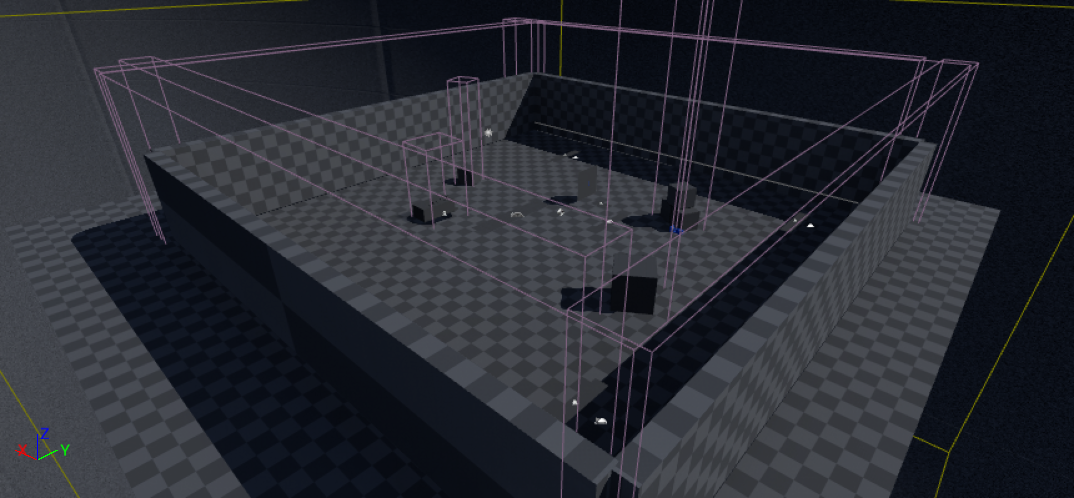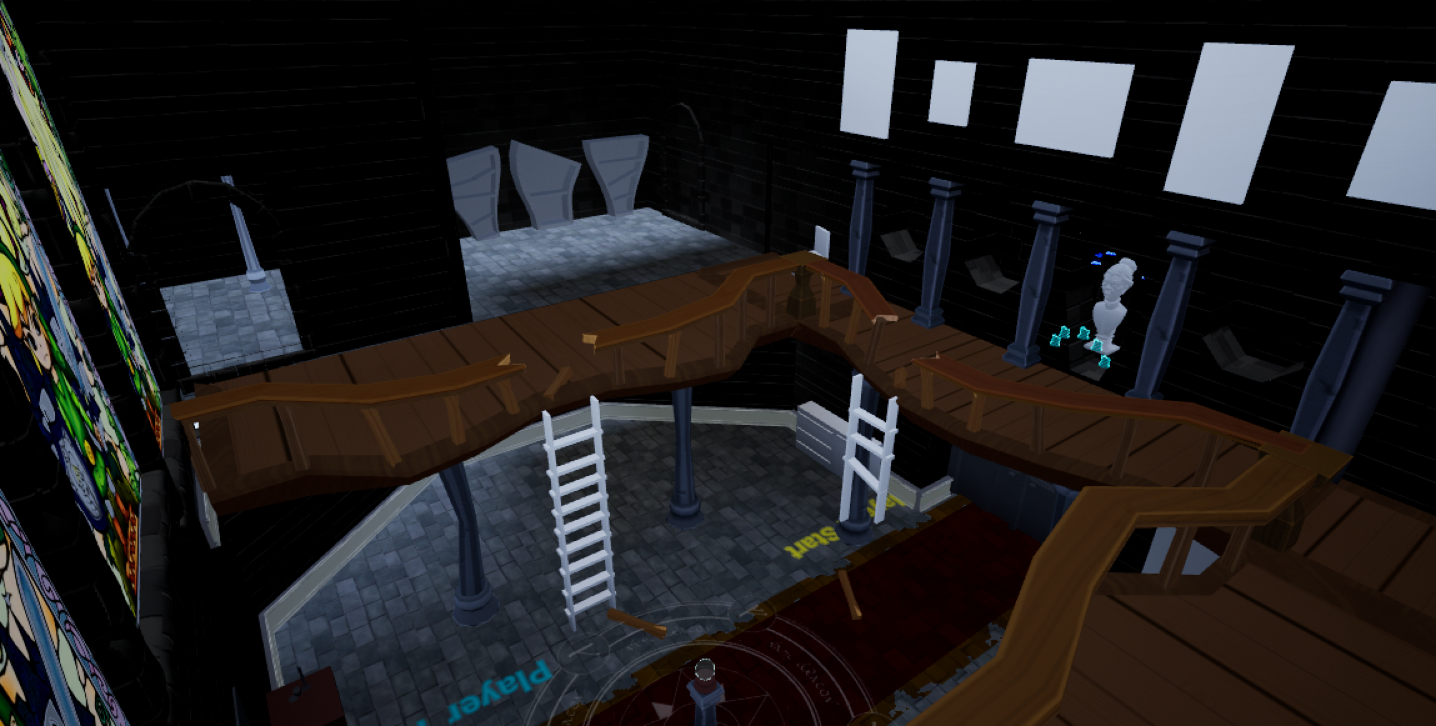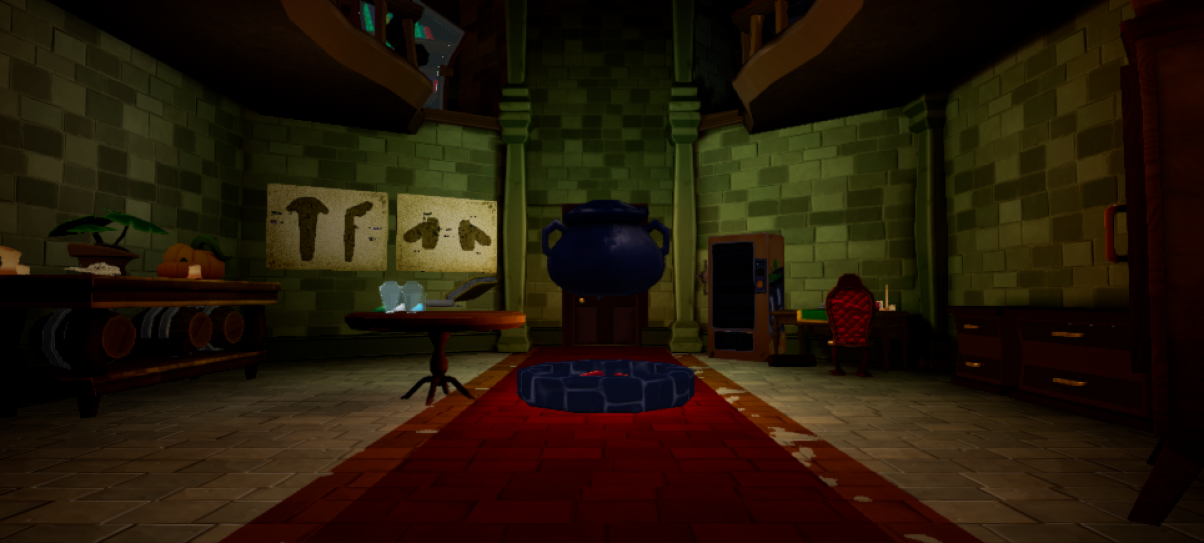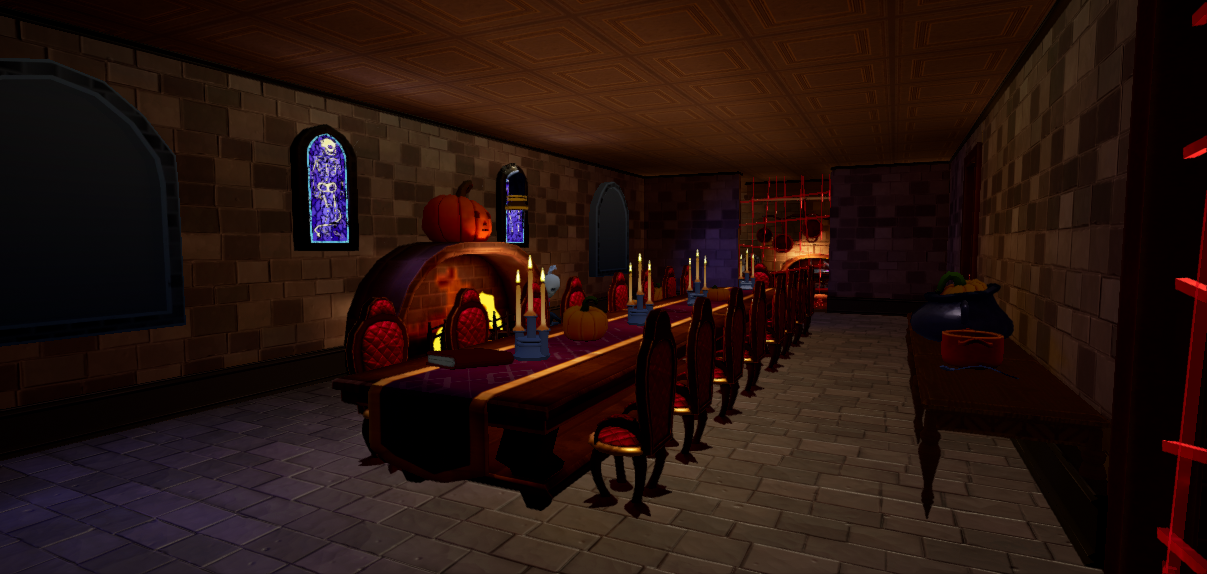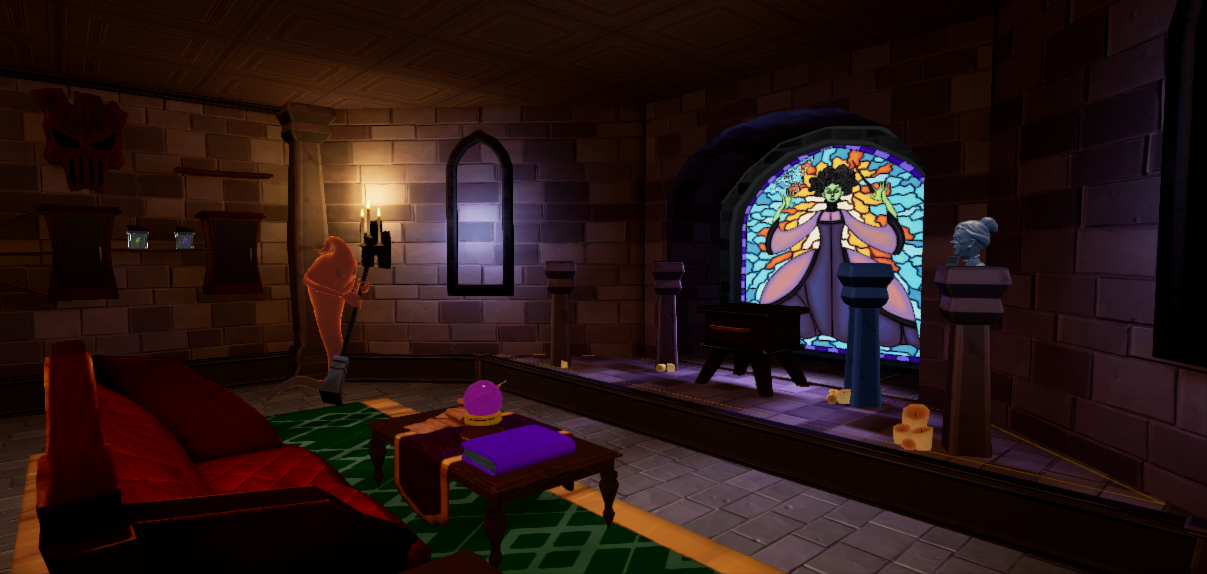The Haunting Hour
The Haunting Hour is a multiplayer VR escape room that released to Steam on March 9, 2019. It was in development for five months by a team of 12 people. I was a game & level designer for the title, designing puzzles and prototyping them in real world spaces with playtesters. Every puzzle in the game required rigorous testing.
From there I built the environments around these puzzles, creating an authentic escape room experience in VR.
Creating a virtual reality experience from a medium that is almost exclusively a real world experience proved to be one of the most fun challenges I’ve had as a designer. We were able to implement puzzles and scenarios that would be near-impossible to replicate in real world escape rooms, and I’m very happy with how we were able to use VR technology to achieve what otherwise couldn’t be done.
This was our VR test space. Everytime we needed to prototype a new mechanic or puzzle, we would do so here before putting into our main scene.
This is the white box of the central room players frequently pass through to complete puzzles and reach new rooms. Initially, we wanted to have the whole game take place in just this room and a starting basement room, but as new puzzle ideas came through, we decided to fan out.
That same room, with some environmental assets in place to experiment with our visual target. Testing the space with the Oculus headset showed me that we would need to widen the space to feature all our puzzles and create a more believable, cohesive experience.
This is how our lobby looks in the final version of the game. Players need to gather 5 artifacts in the level and return them here to break the magical chain lock on the door and escape. This area connects with multiple rooms across two floors.
Let’s now take a look at some of these other rooms I designed.
The starting room, a basement with players each locked behind separate jail cells. The game’s timer doesn’t start until players can figure out how to escape this first room, with each individual cell containing information for how to open the doors.
These arrows are part of a puzzle I designed to escape the cell. Each player must find out where each of their four arrows must be pointed, and communication between players is the only way for everyone to simultaneously escape.
The cauldron room, a two story brewery and first room the players see after escaping their cells. This is where the game and the world timer “begin.” To open the doors to the central lobby, players must get the cauldron up and running.
On the second floor is a candle lighting puzzle that can be completed at any time independently of other puzzles. When players light the center candle, two flames spawn at opposite corners. Players can only light candles next to their last one they lit, and the two flames will move in response. The red flame moves in the opposite direction of your lit path, and the blue flame moves perpendicularly. The objective is to reunite the flames, which then covers the candle board in purple flames, and gifts the player one of the five keys needed to escape.
A dining hall, which featured several puzzles themed around food. Beside the fireplace is a hungry skeleton that players must feed using items from the connected kitchen that are gathered and cooked in the witch’s cauldron.
This room required players to place busts on these pedestals, by finding them scattered throughout the level and arranging them in their order of death dates, which can be found in the game’s library.
This is the clock tower room, and features one of my favorite puzzles I designed, requiring cooperation between all four players. Two players must grab the same objects on opposite sides of this mechanical contraption, while two other players must hit switches on the counters that open and close specific doors on the device. Once players get the object free, they receive one of the five keys needed to win.
